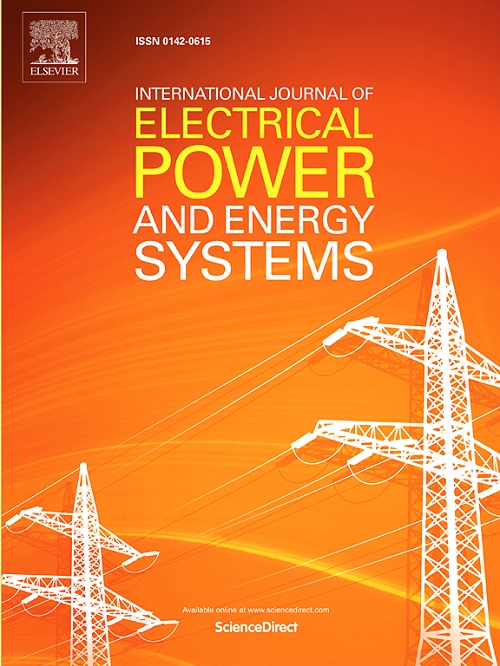Mechanism analysis of subsynchronous control interactions between full-converter-interfaced generation and a series-compensated network
IF 5
2区 工程技术
Q1 ENGINEERING, ELECTRICAL & ELECTRONIC
International Journal of Electrical Power & Energy Systems
Pub Date : 2025-02-26
DOI:10.1016/j.ijepes.2025.110525
引用次数: 0
Abstract
Recent studies reveal that unstable subsynchronous control interactions (SSCIs) between full-converter-interfaced generation (FCIG) and the series-compensated transmission line may occur when high-bandwidth phase-locked loops (PLLs) and high series compensation level (SCL) are implemented. This paper proposes a damping contribution analysis (DCA) method to investigate the SSCI mechanisms involving an FCIG-based power plant connected to a series-compensated network. Analytical expressions of the damping contribution coefficients from the series-compensated network to the PLL and q-axis current control oscillation loops are first derived. These coefficients offer a clear physical explanation of how and why high PLL bandwidth and SCL will deteriorate the damping of the dominant oscillation mode, thus leading to system instability. Additionally, a new SSCI phenomenon is identified, where dynamic interactions between the series compensation and the inner q-axis current control loop with slow dynamics also pose SSCI risks. Furthermore, the damping contribution coefficient facilitates evaluating the impacts of changes in system operating parameters on the modal shift of the concerned oscillation mode. The theoretical findings and conclusions obtained through the DCA are validated using modal analysis and electromagnetic transient simulations.
求助全文
约1分钟内获得全文
求助全文
来源期刊
CiteScore
12.10
自引率
17.30%
发文量
1022
审稿时长
51 days
期刊介绍:
The journal covers theoretical developments in electrical power and energy systems and their applications. The coverage embraces: generation and network planning; reliability; long and short term operation; expert systems; neural networks; object oriented systems; system control centres; database and information systems; stock and parameter estimation; system security and adequacy; network theory, modelling and computation; small and large system dynamics; dynamic model identification; on-line control including load and switching control; protection; distribution systems; energy economics; impact of non-conventional systems; and man-machine interfaces.
As well as original research papers, the journal publishes short contributions, book reviews and conference reports. All papers are peer-reviewed by at least two referees.

 求助内容:
求助内容: 应助结果提醒方式:
应助结果提醒方式:


